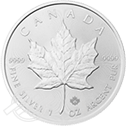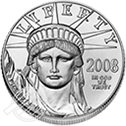Surprise, Surprise… The Fed Is Stuck
Wednesday afternoon brought the release of the latest Fed meeting minutes. The minutes detailed what some analysts already knew: The central bank is on hold for the rest of the year and will not raise rates further.
The Central Bank Is on Hold for 2019
Numerous Issues Cited by the Fed
The Fed cited numerous issues that weighed in its decision: A general unease over the U.S. and global economies, the ongoing trade war with China, a lack of inflation and a messy Brexit. Fed Chairman Jerome Powell last month reiterated the Fed’s plans to remain patient regarding policy.
Of particular note from the minutes was the fact that some members of the Fed appear to have questioned the central bank’s ability to fuel inflation to its desired target of 2% annually. This makes a lot of sense, given the fact that a very strong labor market, higher wages and higher prices due to tariffs have not been able to cause any significant increase in overall inflationary pressures.
The minutes also reportedly revealed an internal debate in the central bank about when it should resume asset purchases. Last month, the Fed ended its balance sheet run-off, and some had suggested that its balance sheet run-off program was the primary culprit behind late 2018 volatility.
The Economy May Not Be As Solid As You Think
Whatever the Fed does or doesn’t do, one thing is clear: The economy may not be as solid as many had anticipated. After all, what does it say about the economy if it cannot tolerate a Fed Funds rate above 2.25%-2.50%?
It is still unclear if the Fed will be forced to cut rates later this year as some have suggested. Recent cracks in both the domestic and global economies have pointed to what may be a significant slowdown that could potentially lead to recession. A failure of U.S./China trade talks may only hasten the process.
It seems that the U.S. economy may either find itself fighting the next major recession in the quarters ahead or getting rescued by the Fed with lower rates and possibly even QE4. Either scenario could be highly bullish for dollar-denominated asset classes, with the gold market possibly being in the best position of all.
Gold Market Showing Underlying Strength
Not only could gold move higher as investors potentially shed stocks, but it could also potentially gain as the dollar weakens and as inflation eventually ticks higher. While stocks have been showing some symptoms of a market top, the gold market has been showing underlying strength in what could be the beginning stages of the next major bull market.
Adding this key asset class to your portfolio has never been easier, and arguably never more important.
Speak with an Advantage Gold account executive today about the potential benefits of gold ownership and to learn more about the key role this asset class may play in the years and decades ahead. Our associates are here to answer any questions you may have and can even show you how to build a significant allocation using an IRA account.
Don’t wait for the next major recession to crush equity markets or for QE4 to sink the dollar. Explore your options for gold ownership today. Call Advantage Gold at 1-800-341-8584 to get started now.
Tags: 401k gold, add gold to my ira, advantage gold, best way to buy gold, gold market, invest in gold, qe4, rollover gold, sinking dollar, the fed


